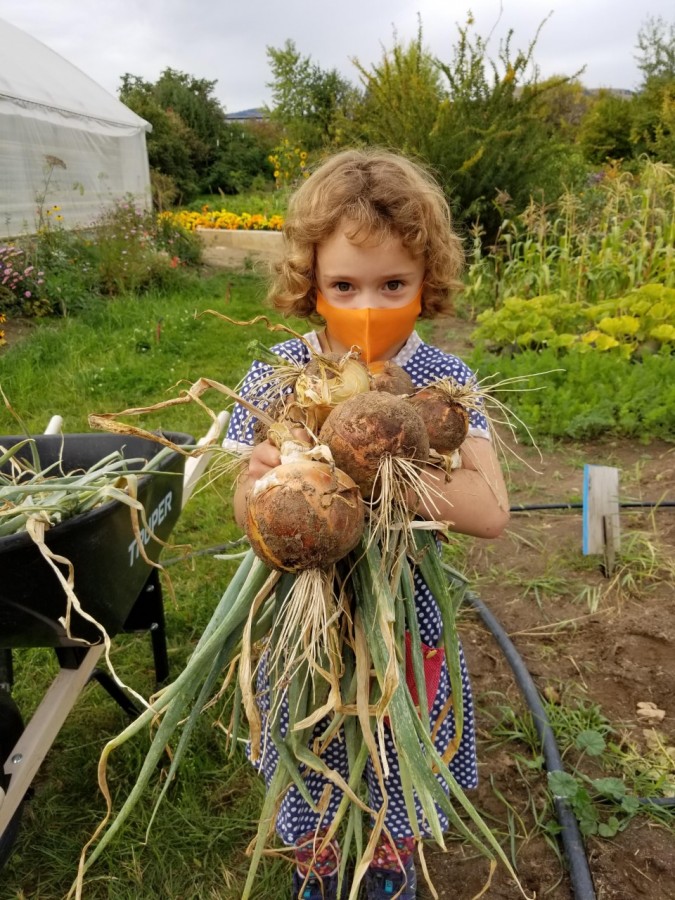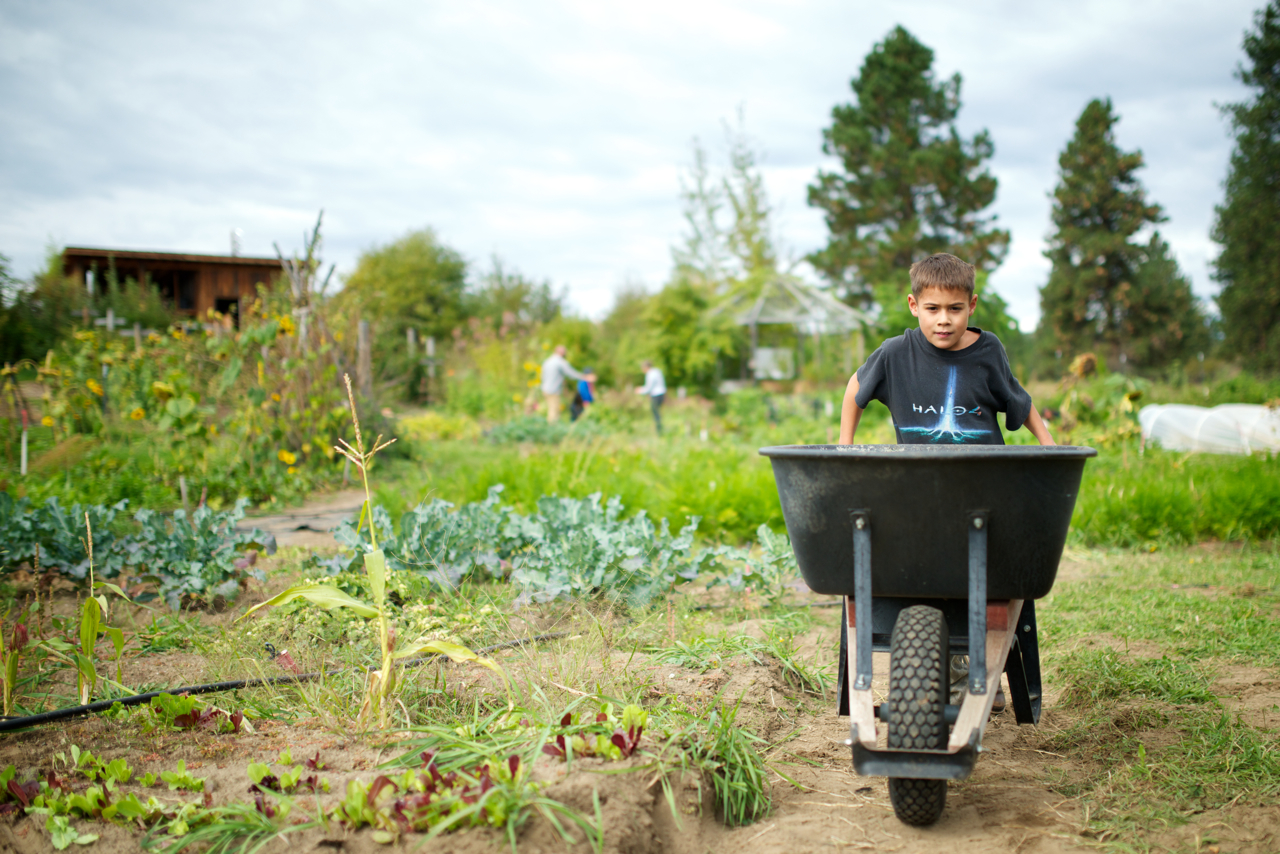Learning outside the box of an indoor classroom.
Tucked in the heart of the Methow Valley is a 1.5-acre classroom. For over 17 years, Classroom in Bloom has taught youth to grow healthy and fresh food, get outdoors and be mindful of the world around them. As a SOWA Feed Your Brain grantee, Classroom in Bloom is one of several projects that run summer learning programs in rural areas of Washington state.
“Everything is interconnected—math, science, nutrition, and even art—when you’re outdoors.”
Executive Director, Kim Romain-Bondi
Classroom in Bloom’s community garden in the Methow Valley and smaller gardens throughout Okanogan County inspire youth to connect to the land and love the food they grow. Their hope is to inspire future land stewards, conservationists, biologists, and more by feeding them through mind and body.
“We have what we call teachable moments. We could be digging and asking the younger children to notice the bugs or the birds we’ve seen and heard,” said Romain-Bondi.
Classroom in Bloom works on real-life projects that contribute directly to the schools and community. As youth learn about farming, they are also growing food for their school cafeterias. Hundreds of pounds of squash, onions, and greens go towards their lunches. They learn the challenges of farming and the rewards of contributing to their community.

“Classroom in Bloom creates the ideal environment for young people to thrive in the outdoors. Their Summer Garden Camp programs provide a safe environment where young people can get their hands dirty, learn about nutrition, and be fully immersed in nature. With so many kids spending most of their time indoors and on a screen, programs like Classroom in Bloom are vital to the health and well-being of youth which, in turn, benefits entire communities,” said Ben Baird, Spokane County program quality manager at School’s Out Washington.
For Classroom in Bloom, 2020 had its challenges but was also an opportunity to reimagine their work. For example, excess food was redistributed in new ways to the school district’s summer lunch program and the local food bank. The team realized their capacity to grow and share food was a welcome resource for many in the community and they plan to continue their expanded efforts into the future.
They also sent home recipes and activities to keep kids active in their own home gardens. The Classroom in Bloom newsletter offered tips on what to grow when and other helpful knowledge for planning out a garden.
Perhaps the most impactful outcome for youth in the community was the offering of year-round programming. Classroom in Bloom now offers free after-school programs twice a week that are open to all. They also increased their summer garden camp from four to seven weeks and tripled the number of financial scholarships available. All of this supports youth learning outside and ensures families have an inspiring and safe space for their children to be when not in school.
“Kids become equal in the garden. Regardless of where you come from, there is space for you to learn.”
Executive Director, Kim Romain-Bondi





